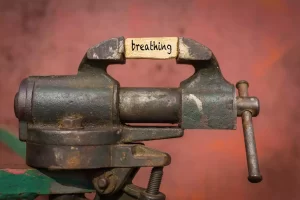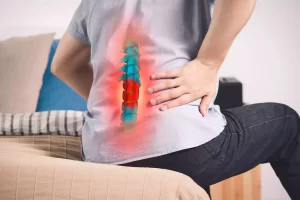Several muscles participate in the movement simultaneously, and the sensory-motor system is responsible for it, which is based on the cooperation (synergy) of agonist and antagonist muscles.
The agonist is the muscle that contracts (shortens) when moving, while the antagonist is the one that relaxes (expands).
Normal and efficient movement of the body requires harmonious cooperation between the agonists and antagonists. When we decide to perform a certain movement, we usually control the muscles needed to perform the movement even if we do it unconsciously. Simultaneously, the part of the brain (cerebellum) where coordination takes place ensures that the antagonists are released. The connections between the muscles that contract and those that relax or lengthen in accordance with the former are learned from the very beginning of our lives. Through movement, we learn to coordinate motor patterns in a way that allows us to use the least amount of effort and maximum efficiency.
Good coordination becomes very necessary, even during childhood, so that the baby can learn how to move and create new moves and thus develops his motor abilities. A baby has relatively little strength compared to his body weight and the way it is distributed (heavy head). Therefore, he has no choice but to explore and learn the harmonious tension of agonists and antagonists’ release while playing. This is the foundation for developing his intelligence, memory, emotions, and feelings for one’s own body. When we observe a child’s movement, we see that it’s light and fluid. Because of growing up and the growing demands to focus on the environment, a person slowly neglects how the body feels, understands, and controls. He leaves control to reflexes and habits without learning to check the effectiveness and consistency of action.
A similar thing happens when we get injured or become seriously ill, and because of this, our way of movement and living changes for a while. After a few weeks of this condition, the altered movement and sensation remain as the injury or disease heals, leaving a consequence in the mode of movement and sensation – we are not even aware of this as we have become accustomed to this change through typical somatic reflex patterns. The consequences of all these changes then lead us in the following years to chronic pain and wear, and structural changes in the body that at first glance have no connection. A clavicle fracture at a young age, for example, leads to sciatica or wear and tear of the cartilage in the knee.
That’s why it is extremely important to maintain the ability to feel and observe one’s own body. We can maintain this with the help of somatic movement. Being aware of yourself is very pleasant, even narcissistic; you pay attention to yourself and are using your conscious mind to get an insight into your body’s inner workings. But who are you that you are so important? “I am as important as everyone around me, that I should respect and love just as I love myself.” Therefore, everyone should think about himself, get to know himself in-depth, and nurture his spiritual being, so he will see more clearly who he is and who the people around him are.
The only way to discover our being is to explore how we feel, our bodies, emotions, and spirit. Performing movement consciously and with awareness to increase our ability to sense muscles and movement in which we participate is quite useful for our mind and body. We can control what we are aware of; if we train our awareness, we can control everything much better. This is also true for when we move unconsciously because we program and coordinate our actions to make it more effective through somatic self-exploration.
If we take our time and compare the movements of an adult and a child, we will quickly notice a basic difference: a child performs more movements with less energy required than an adult. How is it possible for an adult to walk harder than a child who has only been walking for a few years, despite more experience from years of walking? I believe it is due to the influence of sensory movement amnesia, which also brings a lack of conscious control over movement. Imagine two men, each holding a saw at their end and sawing wood. One represents the agonist, the other the antagonist, and the saw movement the body movement. If they cooperate and move with feeling, controlled, and coordinated, one pulls, and the other gives in accordingly. The observer would see a lot of movement and little effort by the men. The action is similar to a child’s or adult’s movement with little sensory-motor amnesia and good feeling. However, when the conscious sense and control for cooperation between these two men changes, one of the men is pulling, and the other is not giving in, leading to more effort and less control. The observer would see this as more effort and less movement during sawing. The movement would be increasingly similar to the movement of an older person.
Such a condition is due to sensory-motor amnesia. Without a change in consciousness and feeling over the agonist’s control and the release of the antagonist, this error increases and increasingly affects our movement and behavior. We feel movement as heavier, more strenuous, limited, and that’s how we feel. We usually feel that we are weaker and have less fitness, which is why we start trying even harder to be stronger and faster, but this only increases our problems and incorrect feelings.
A radical change and eliminating chronic pain and movement limitations are only possible in a different approach. With active participation, the client himself notices, feels, and, under the teacher’s guidance, also understands the shortcomings in feeling and controlling the body and its parts. He learns to perform movement with grace; he feels the cooperation between the agonists and antagonists and thus decreases the required effort and problems caused by inefficient movement and posture.
We can see the example of an agonist and antagonist in the image below. The brains direct and tell the muscles what to do. Sensory-motor amnesia disturbs this process and makes movement more rigid and less efficient.

Aleš Ernst, author of the AEQ method and AEQ breathing





